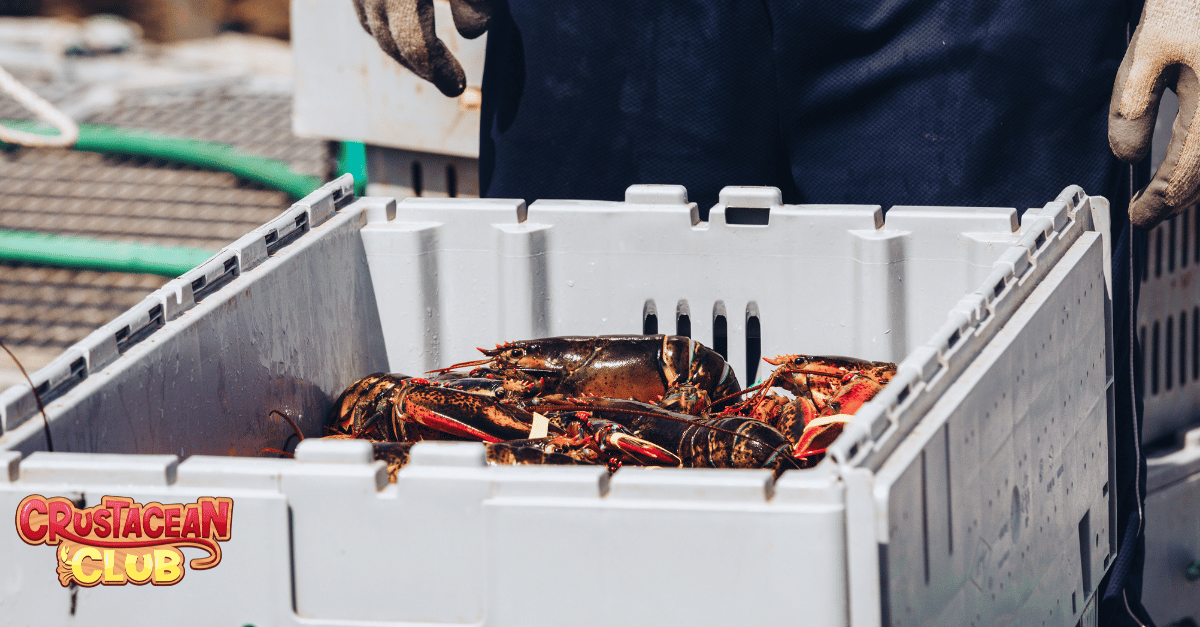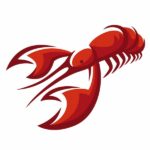The Ultimate Seasonal Guide to Lobster and Crab Fishing in the U.S.

Seasonal fishing means adjusting your tactics to the seasons, ensuring you can catch the fish or crustacean you’re after at any time of the year. In this guide, you’ll learn how to optimize your fishing strategies for different seasons, particularly for lobster and crab fishing in the U.S. From the spring awakening of fish to winter ice fishing essentials, we’ve got comprehensive tips to make your seasonal fishing trips a success.
For more information on all things crustacean, be sure to check out the Crustacean Club site where you can also find expert guides on lobstering and crabbing!
Key Takeaways
- Understanding seasonal patterns and behaviors of target species is crucial for effective lobster and crab fishing in the U.S., with specific events like the mini lobster season in the Florida Keys enriching the experience. Be sure to read about more hot spot locations for lobstering and crabbing on our site!
- Spring and fall fishing require particular strategies, such as using specific lures and targeting shallow areas where fish are more active, while winter fishing necessitates specialized gear and safety measures, especially for ice fishing.
- Adhering to regional regulations and practicing ethical fishing techniques are imperative for conservation efforts, supporting sustainable fish populations and marine ecosystems.
We love hearing from our readers and subscribers, so please feel free to reach out and contact us today!
Understanding Seasonal Fishing
The rhythm of the sea changes with the seasons, and so does the approach to fishing. Seasonal fishing isn’t just about timing; it’s about understanding the behavior of your target species and adjusting your strategies accordingly. This is especially true for lobster and crab fishing in the U.S., where each season brings its own unique opportunities and challenges.
Take the Florida Keys, for instance. Known for their delectable spiny lobsters, the Keys attract seafood enthusiasts from around the globe during the spiny lobster season. The mini lobster season, also known as the mini season or the two-day sport season, is a highlight for many divers and fishermen. This special event occurs on the last consecutive Wednesday and Thursday of July, offering a sneak peek before the regular lobster season kicks off in August [1].
The allure of seasonal fishing lies in its diversity. From the early spring bass fishing to the intense summer lobster harvest in the Florida Keys National Marine Sanctuary, each season offers a new adventure. Getting a grasp on these rhythms can elevate your fishing experience, thus making every trip productive and memorable.
Spring Fishing Tips
Spring is a time of renewal, and for fishermen, it’s a season brimming with possibilities. As the water warms, fish become more active, moving closer to the banks and structures like fallen trees and rocks. This is prime time for targeting species such as bass, crappie, and bluegill in ponds. A medium to medium-light spinning rod with a 6-pound line offers the versatility needed for these conditions.
In terms of lure selection, opting for smaller ones often works better in spring. With fish congregating in smaller, confined areas, topwater lures or those that stay high in the water column can help avoid snags and increase your chances of a successful catch. Remember, fish are often close to the bank in the spring, making it crucial to approach these areas with stealth and precision.
Preparing Your Gear for Spring
Before you venture out, make sure your gear is primed for the spring season. A simple spinning rod and reel combo with 6 or 8-pound monofilament line is ideal for most spring fishing scenarios. This setup provides the flexibility needed to handle various species and fishing conditions.
March is an excellent time to review and update your fishing gear. Check your lines for wear and tear, ensure your lures are in good condition, and stock up on any missing essentials. With your gear in top shape, you’ll be well-prepared to take advantage of the vibrant spring fishing season.
Summer Fishing Strategies
Summer brings a different set of challenges and rewards. The warm waters of this season are home to species like bass and catfish, which thrive in higher temperatures. To increase your chances of a good catch, use lures that mimic the natural prey of these warm-water species. Topwater lures are particularly effective during summer as many fish feed near the surface.
The regular lobster season in the Florida Keys is a highlight of the summer, starting on August 6 and running until March 31 of the following year. This season is perfect for night diving and lobster harvesting. Keep in mind, the secret to fruitful summer fishing lies in being adaptable and responsive to the evolving conditions and behaviors of the fish.
Safe Boating Practices in Summer
Safety on the water is paramount, especially during the busy summer months. Make certain that every passenger has a life preserver (PFD) and is wearing it at all times. Carry a fire extinguisher and make sure it is easily accessible and in working order.
Effective seamanship requires knowledge of water rules, like ‘red, right, returning’, and refraining from anchoring on coral. Use mooring buoys or anchor on sandy bottoms to protect marine habitats. Safety measures like a kill switch with a lanyard can prevent accidents, making your summer boating experience both enjoyable and safe.
Fall Fishing Techniques
As the leaves change color and temperatures drop, fish behavior shifts. In the fall, species like bass move from deeper areas to mid-depth and shallow waters, making them more accessible to anglers. Transition areas such as ledges, humps, and ditches become hotspots for fishing during this season.
Grasping these behavioral changes is vital. Fish tend to be more active in the shallows where the water remains warmer, providing anglers with excellent opportunities to reel in a good catch. Adapting your techniques to these conditions can significantly enhance your fall fishing success.
Targeting Specific Species in Fall
To target specific species in fall, a deep understanding of their feeding patterns and habitats is necessary. For example, bass often follow schools of baitfish like shad and shiners, making it crucial to locate these bait schools for a successful catch. Creek mouths serve as ideal transition habitats from deep to shallow waters, perfect for fall bass fishing.
Using swimbaits that mimic the appearance of big shad or bluegill can be particularly effective. Matching your bait to the natural food sources available during the fall can significantly increase your chances of success, making each fishing trip more rewarding.
Winter Fishing Essentials
Winter fishing comes with its own set of challenges, primarily related to staying warm and comfortable. The key is to layer: begin with a moisture-wicking base layer, followed by an insulating mid-layer, and lastly a waterproof, windproof outer layer. This combination helps trap heat and keep you dry, essential for enduring the cold.
To stay warm and dry during winter fishing, it’s important to have the right gear. Here are some essentials:
- Waterproof jackets, trousers, and boots to keep you dry
- Thermal hats, gloves, and socks to prevent heat loss through extremities
- Staying active and using portable heaters to maintain body warmth
With these essentials, you can make your winter fishing experience more enjoyable.
Ice Fishing Basics
Ice fishing is a unique winter activity that requires specialized gear. An ice auger for drilling holes and ice fishing rods are essential tools. Safety precautions are paramount: always check the ice thickness and use ice picks for self-rescue in case of a fall.
Portable shelters, including soft shell options, provide protection from the wind and cold, making ice fishing more comfortable. These shelters can significantly enhance your fishing experience, allowing you to stay out longer and catch more fish.
Regional Regulations and Licensing
It is essential for any fishing trip to understand and navigate regional regulations and licensing requirements. In Florida, for instance, a saltwater fishing license and a lobster license are mandatory for those aiming to catch lobsters in the Florida Keys. The regular lobster season begins on August 6 and ends on March 31 of the following year. While targeting lobsters, you might also encounter various Florida fish species in the area.
The two-day sport season, held on the last consecutive Wednesday and Thursday of July, offers a unique opportunity for lobster harvesting during the regular season. Specific areas in the Florida Keys, like Sanctuary Preservation Areas, Ecological Reserves, and Dry Tortugas National Park, are closed year-round to lobster harvesting. Additionally, Tortugas National Park, which is adjacent to Everglades National Park, also has its own regulations to ensure sustainable fishing and preserve marine ecosystems.
How to Obtain a Fishing License
While the process of obtaining a fishing license is straightforward, it’s an essential step towards ensuring legal and ethical fishing. In Florida, you can easily obtain a saltwater fishing license and lobster permit online. Ensure you check the specific regulations for the area you plan to fish, as requirements can vary.
Being compliant with local regulations not only helps preserve fish populations but also enhances your fishing experience by ensuring you’re following best practices. Always stay informed and prepared before heading out on your fishing adventure.
Conservation and Ethical Fishing Practices
Sustainable fishing is deeply rooted in conservation. During Florida’s lobster season, it is essential to adhere to catch limits, measure lobsters carefully, and choose sustainable practices to support conservation efforts. These actions ensure that fish populations and aquatic habitats are preserved for future generations.
Practicing ethical fishing techniques contributes to the health of marine ecosystems. Here are some ways fishermen can do their part:
- Use appropriate gear
- Avoid overfishing
- Respect no-take areas
- Follow possession limits
By following these practices, fishermen can play a crucial role in conservation efforts and ensure the longevity of our fishing traditions.
Planning Your Fishing Trip
Strategizing a fishing trip demands meticulous deliberation on aspects like timing, location, and preparation. Early morning or late evening fishing can help avoid intense midday heat and increase your chances of a good catch. Preparing to board the fishing boat by 5:30 AM ensures you make the most of the day.
Selecting an appropriate location according to your target species is of utmost importance. Whether you prefer reef fishing, deep-sea fishing, or flats fishing, each type offers unique opportunities. Booking your fishing charter in advance and staying at a nearby motel the night before can help you start your trip fresh and ready.
To ensure a successful trip, it is important to pack essentials like gas, bait, and food, including a packed lunch. Repeating the fishing routine over multiple days can provide a more immersive and relaxing experience, allowing you to fully enjoy the adventure.
Summary
In summary, understanding seasonal fishing and regional regulations can significantly enhance your fishing experience. From spring fishing tips and summer boating safety to fall species targeting and winter fishing essentials, each season offers unique challenges and rewards. Being prepared with the right gear, knowledge, and ethical practices can make all the difference.
Embrace the rhythm of the seasons and the thrill of the catch. Whether you’re night diving for lobsters in the Florida Keys or ice fishing in the winter, each adventure offers a chance to connect with nature and create lasting memories. Happy fishing!
Frequently Asked Questions
When does the regular lobster season start in Florida?
The regular lobster season in Florida starts at 12:01 a.m. on August 6 and ends at midnight on March 31.
What gear is recommended for spring pond fishing?
For spring pond fishing, it is recommended to use a medium to medium-light spinning rod with a 6-pound line for versatility.
What are some safe boating practices for summer fishing?
It is essential to always have a life preserver for each passenger when engaging in summer fishing. Additionally, carry a fire extinguisher, practice good seamanship, and use a kill switch with a lanyard to ensure safety on the water.
How can I stay warm while winter fishing?
To stay warm while winter fishing, make sure to layer your clothing, use waterproof gear, stay active, and consider using portable heaters as needed. These strategies will help you stay comfortable and warm during your fishing trip.
How do I obtain a fishing license in Florida?
To obtain a fishing license in Florida, you can easily apply for a saltwater fishing license and lobster permit online. Just make sure to review the specific regulations for the fishing area.





















